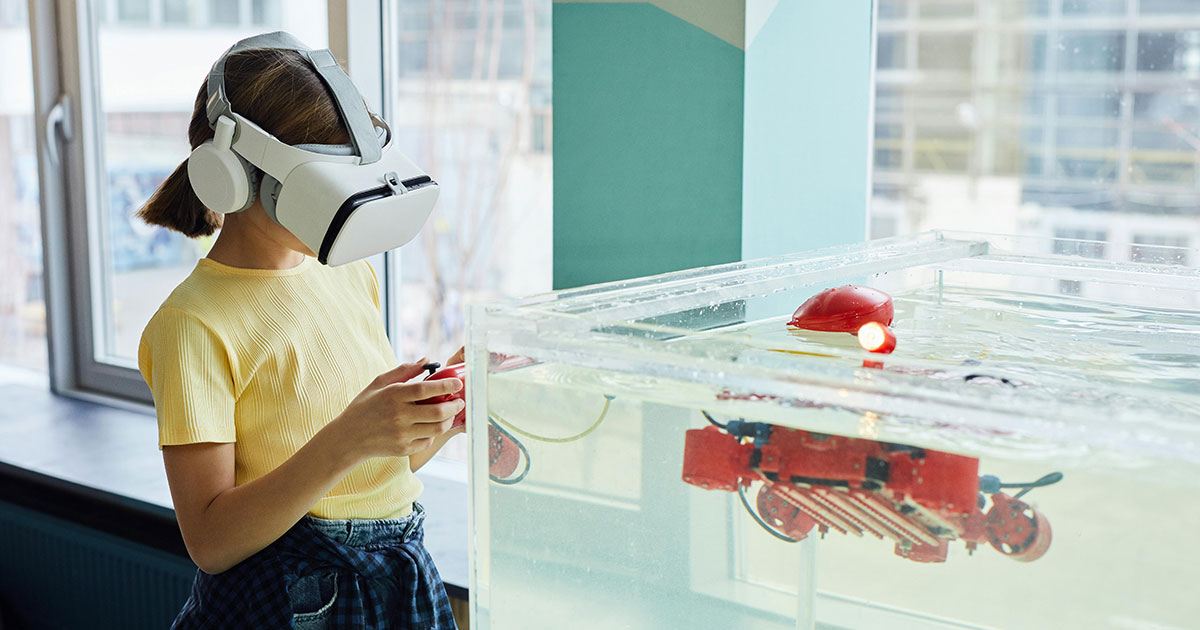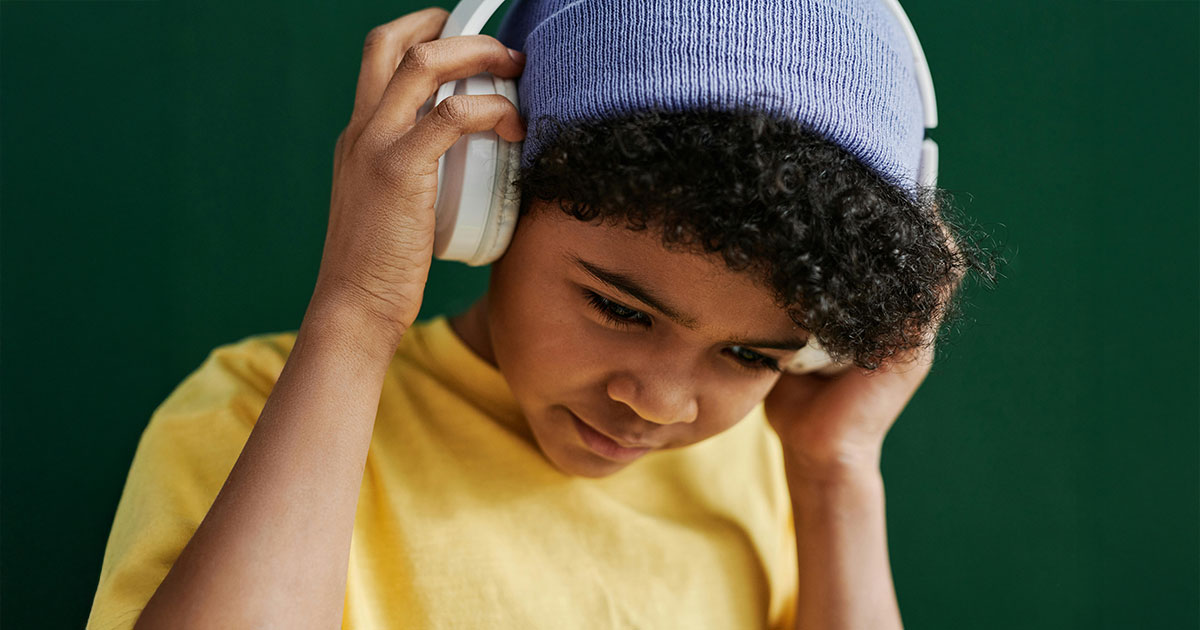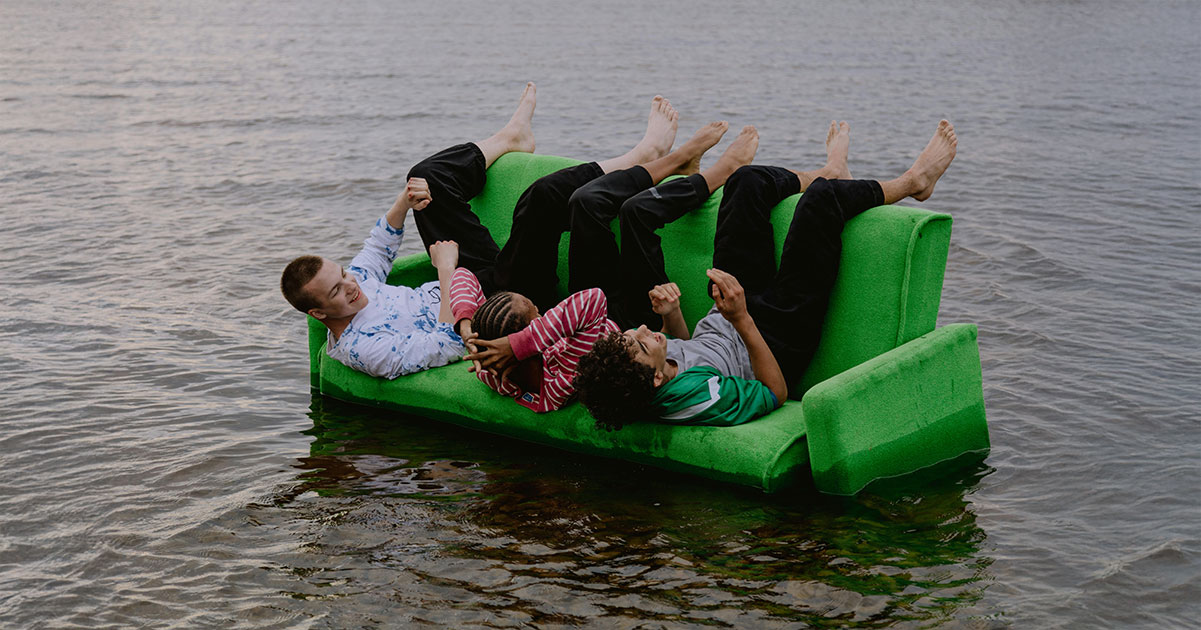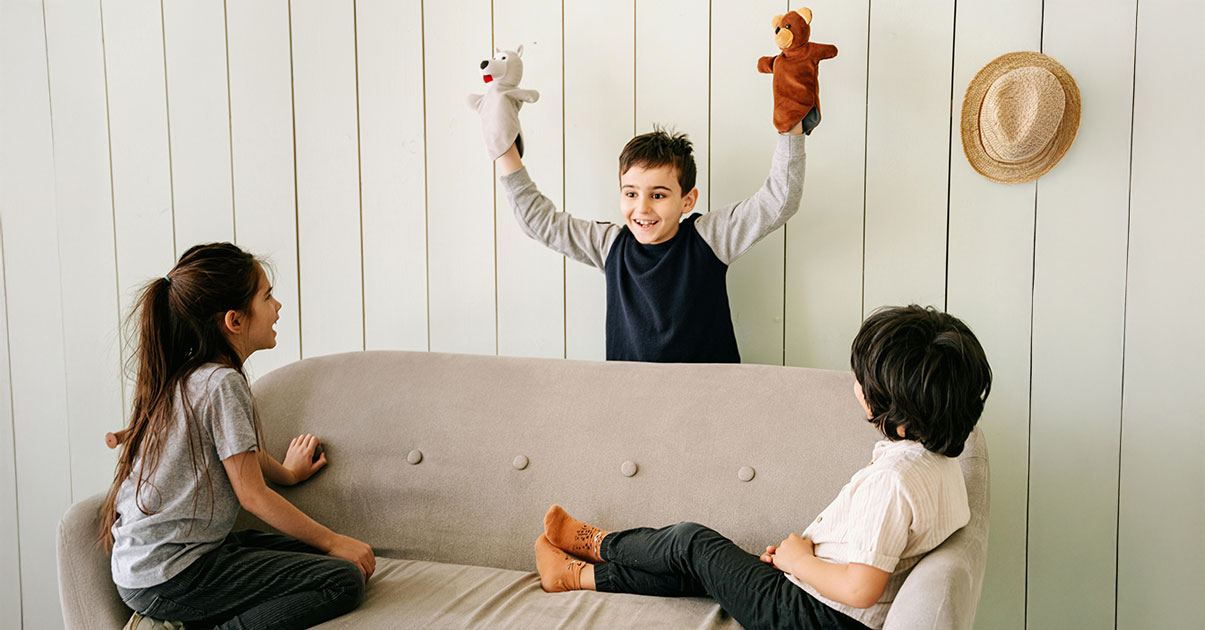Jerome Bruner, renowned psychologist, stated in a 1976 Psychology Today article: “Play is the serious business of childhood.” (1) Yes, 1976! And ever since, child advocates, educators, developmental specialists—even Mr. Rogers—often echoed Dr. Bruner. Why? Because he was right.
What many parents of young children might not know is that since 1976 there have been thousands of studies demonstrating the significant effectiveness of play. It’s an absolute imperative in order for youngsters to grow optimally. Children learn critical thinking skills and spatial relationships when digging in the dirt; they learn about who they are when dressing up, pretending to be someone else. When directing their own play experiences, they practice self- regulation and autonomous motivation. To name a few critical learnings taking place naturally when playing.
Peter Gray, who has researched play extensively, purports that the decline of free play can be linked to the rise in anxiety and depression. We also know that when children play longer before entering formal schooling, they do much better academically. In Singapore, China, and Finland, three of the highest-performing education systems according to the major international ratings, the average starting age for formal education was right around seven years old. From 0 to 7, play predominated as the pathway to learning.
A researched backed initiative, the Genius of Play reminds parents of play’s many benefits for both optimal cognitive and emotional/social development.
Yet, allowing youngsters free-floating frivolity in our digital age is complicated. In today’s high-tech world, the “glass slab,” (2) has entered the child’s world, often interfering with the type of play that will make real positive differences in a child’s cognitive, emotional-social, and physical health.
Parents increasingly ask me such questions as:
- How much screen technology should I allow my two- year-old?
- Should five-year-old’s have their own I-Pads?
- Should I potty train with an I-Pad?
- Does it harm my nine-month-old to play with my I-Phone when I am too busy to
- entertain him?
While there are no one-size-fits-all answers to these questions, I believe understanding the young
brain’s need for various forms of play can help parents make sound decisions about how much screen play to allow in early childhood.
I advocate this bottom-line brain-compatible guideline for parents of young children:
Provide more opportunities for physical and imaginative play than for screen play.
I know. I know…much easier said than done. So, let’s consider each type of play along with
some nuts and bolts, nitty gritty practical activities you can do instead of put a screen in front of
a tired toddler or a petulant preschooler when you are stressed, exhausted, and at your wit’s end.
3 Types of Play
- Physical play involving movement and sensory experiences.
- Imaginative play involving generative creativity, visioning, and self-understanding.
- Screen play—the play youngsters do on hand-held electronics and computers, that doesn’t involve movement or 3-D sensory experiences.
Physical Play: Brains Need Bodies that Move
When babies and young children are moving and exploring their three-dimensional world, they are busy building neural structures in their brains that are the very foundation for all future learning. Movement is absolutely necessary in the early years to grow vital neural pathways for emotional health, social competence, and cognitive abilities.

From birth through age 3, a child’s brain produces the astonishing number of more than a million neural connections per second! Dr. Marian Diamond, over a series of experiments spanning more than a decade at the University of California, demonstrated that neurons in the young brain’s cortex become larger, growing more complex networks with movement and sensory experiences. (3) In other words, the more movement and sensory experiences, the more healthy the brain/nervous system neural connections.
Other studies show that rats deprived of movement had underdeveloped medial frontal lobes—the brain centers responsible for regulating emotions—demonstrating aggressive and anti-social behaviors when placed in cages with other rats. In contrast, rats raised with opportunities for motor activity had particularly advanced medial frontal lobes. In addition, these rats showed greater emotional control and more playful, pro-social interactions with others. (4)
Currently, a growing body of research links screen overuse in the toddler years with development problems by age 5. Dr. Monique Moore Hill and her colleagues (once again from the University of California) conducted a longitudinal study on toddler screen time. I share their own powerful message below because they didn’t mince words:
This study measured screen time at 18 months of age and determined that children who used more screens, had higher incidence of autism, ADHD and developmental disorders ages 3 to 5. Previous research has shown that 9-18 months is a critical period for development of social communication. Infants and toddlers who are plopped in front of TV, or worse have an iPad or cell phone mounted to their car seat, are not receiving sufficient human connection and interactive play. These two factors are essential in creating foundations for future success and growth. It’s not just 9-18 months that we should be worried about. The more time humans spend in front of screens makes them more prone to social and even antisocial disorders. Look at the rise violence against women, violence in schools and mass shooters. Humanity has forgotten what it means to be a human. We need to take this research seriously and strive as clinicians to educate parents and teachers that screen time is causing profound mental illness in this
generation of children. (5)
We are sensory beings, after all. Youngsters need to be continually processing sensory data, learning from and adjusting to the environment simultaneously, or they risk severe delays and developmental distortions—cognitively, emotionally, and socially. In her book Wisdom and the Senses, Joan Erickson points out, “The sorting of incoming sensory stimuli demands concentration and a capacity for quick and fluid evaluation.” (6) Without the opportunity to process the complex texturing of sensory data, young brains cannot easily grow selective attention and concentration abilities. Youngsters need to be immersed in the sensory world of concrete, tangible 3-D objects, moving, touching, etc. If you ever tried to keep a puppy perfectly still, you know the frustration (and fruitlessness) of trying to tame the impulse to move—a biological imperative—in young mammals.
We are seeing a sharp rise in sensory-related issues, along with poor motor control in the later years. Doctors reporting in the January 2024 issue of the Journal of the American Medical Association of Pediatrics report that “early—life television or video exposure was associated with atypical sensory processing.” (7) To prevent or minimize health risks, parents can provide movement and sensory-related activities throughout the early years.
Moving Outside and Inside
The value of playing outside in nature can’t be overestimated. Many studies indicate that experiences in nature build cognitive capacities par excellence. Research from Spain, for instance, shows that time spent climbing trees and playing games on grass, enhance mental functions.
Kids love to roam. Just ask the second graders at Charles R. Drew Charter School in Atlanta who designed and created their own playground. They have no idea that the physical act of climbing a play structure creates a multi-dimensional mental model of the experience inside their heads, furthering their ability to use past memories to learn and rehearse new skills. All they know is they are having fun, and that’s enough!
Rainy Day?
Let youngsters dance or march to some tunes. Research has shown music increases the brain’s capacity by increasing the strength of connections among its neurons. Chimes, bells, triangles, tambourines and other simple instruments enable children to make music as they move. Parents can also turn on an MP3 player and encourage dancing, prancing, marching, clapping, and arm movements with scarves, knowing that they are not only helping their child increase physical fitness, but also nourishing the child’s brain as well.
Fine motor skills such as drawing and painting are important to encourage during this stage of neuro-development. Art activities provide a wide variety of textures, colors, and sensations for the child to experience and integrate. Painting with watercolors, drawing with a fat crayon, and molding clay are all art activities, but they are all different experiences for the young brain, too. New brain cells grow with such enriching activities.
Jean Van’t Hul’s, Artful Parent blog offers magnificent art activities for youngsters.
Imaginative Play
Pretend play is the way young children practice turning internal images into actions. By taking on different roles, for instance, they absorb various image-sets of feelings, attitudes, and actions. When children play, they enter the realm of the imaginal, the world of the artist and poet. This world is their home. It’s where the young mind must hang out if it’s to grow appropriately. Through play experiences, children plan and organize, predict and anticipate, take risks, reflect and experiment.

Decades of empirical research have established the multiple benefits of children’s imaginative play. Because image making forms the basis for thought and because the young brain naturally seeks symbolic experiences, play develops cognitive, emotional, and social learning. Research has found that it also “fosters an impressive array of skills that are necessary for school success including taking another’s perspective, regulating one’s emotions, taking turns with peers, sequencing the order of events, and recognizing one’s independence from others.” (8) Not surprisingly, children who engage regularly in imaginative play are more creative than their peers and often leaders in their peer group. (9)
It can help to support children’s image-making abilities by reading to them extensively and to providing many opportunities to listen to audio stories. Often children need some help developing their imaginations, before they self-select imaginative play experiences. Screen images don’t help at all. In fact, they hinder because all is given. Nothing is needed for the child to make up. Seeing an image can’t grow a human’s image-making capacity.
What To Say To Help Develop Young Children’s Imagination
“Wow! Your drawing shows you paid attention to the pictures in your head.”
“Before I read another page in the book, let’s talk for a few minutes about any pictures you are seeing in your head.”
“Is what you see in your head the same as this picture in the book? Describe for me what you see in your head.”
“Your brain certainly knows how to be imaginative. Look at the puzzle you put together (the art project you finished, the puppet play you did, etc.).”
“We will read one book about cats with pictures and another book about cats without pictures.
Then you can draw your own pictures of cats, OK?”
Screen Play
We could debate the word “play” used in various screen activities, because often screen time is not free-form, and not technically “play.” Children are constrained by the choices of the app developer or software writer. If screen-based activities are multiple choice or don’t allow the child to actually create something, their value diminishes for young brains.

Let’s face it; we call them “educational apps” for the basic reason that they are teaching kids something. For instance, Daniel Tiger’s Day and Night is a well-rated app that teaches about daily routines. Children help “Daniel get ready for school in the morning and for bed at night through imaginative play and songs.” But whose imaginative play and songs? We want to be sure to make up original songs, too!
The app, Explore Daniel Tiger’s Neighborhood, encourages children to make up stories. Advertised as a “digital dollhouse,” it engages the child’s imagination and allows for exploration. Apps that support children’s artistic and creative abilities allow for expressing and tinkering in the digital environment. Common Sense Media has a list of creative apps here.
In determining what types of screen play for your child, you couldn’t go wrong with assessing the app or game with these simple questions:
- Is it engaging and energizing rather than rote and draining?
- Does it make my child more curious about life? More curious about him/herself?
- Does it promote a sense of play and freedom to learn, rather than being restrictive and controlling?
Ultimately play is all about a sense of fun, freedom, and life. As Bernie DeKovan states in his book, A Playful Path,“ …playfulness will lead us back to life itself. All of life.” (10)
Recommendations
I know smartphone, video game and Internet addiction is real. I know this from the research. More importantly, I know this first-hand from the many families I have worked with whose lives were negatively impacted by screen addiction and in some cases, whose lives were utterly destroyed.
So, for me, it is a moral imperative to let parents of young children know that the earlier they start with screen technologies, the more difficult it is to use screen technologies age-appropriately as the child grows. In fact, I am becoming convinced that an appropriate balance with screen technologies is impossible in early childhood because the young brain is so vulnerable to screen time’s negative impacts.

In my book, Patterns Over Time: A Research Summary: Screen Time and Healthy Development, I reviewed about 200 studies over a 60-year period, from the 1960s to 2022, and compiled results within 15 areas of child and teen development. What I found writing confirmed what you may already know: too much screen time makes it harder for parents to meet their child’s developmental needs.
You probably experience this on a daily basis: You give your youngster time on the I-pad and he nags and whines for more time on the I-pad. You give her your cell phone once to prevent a tantrum in the checkout line, and she’s screaming for it every day. The incessant desire for the small screen is something adults have problems taming—imagine how difficult it is for young vulnerable brains?
The irony is that youngsters, who begin early with screen play, are less likely to be able to manage screen technologies when they get older.
So, with these realities in mind, I offer my recommendations for allotting time in each type of play:
For toddlers through age 2:
Movement and sensory experiences 85% of child’s play
Imaginative Play 15%
Screen Play 0%
For Children ages, 3-5:
Movement and sensory experiences 70% of child’s play
Imaginative Play 25%
Screen Play 5%
For Children ages 6-8:
Movement and sensory experiences 65% of child’s play
Imaginative Play 25%
Screen Play 10%
The Good News is that often movement and sensory experiences include imaginative play and imaginative play often includes movement and sensory experiences. Think dress-up! I am sure you can think of other ways to combine these throughout the day such as making up stories about what your child sees on a walk or singing songs in the car on the way home—well, maybe not enough movement in the car—but clapping hands can count.
Parting Words
Remember, these are ideal percentages. On any given day screen play make take more time than you want it to. If so, cut back the next day or the next. Strive to think about how often during a week your child is engaged, moving in the 3-D sensory world. After all, this world, not the screen world, serves as the only solid and irreplaceable foundation for your child’s optimal growth.
References
- “Play is Serious Business,” Psychology Today, March 1976, pp. 126-135.
- David Rose, Enchanted Objects, Scribner, 2014, p. 17.
- Jane M. Healy, Ph.D., Endangered Minds: Why Our Children Don’t Think, Simon and Schuster, 1990, pp. 47-65
- Ibid.
- Monique Moore Hill, Devon N. Gangi, Meghan Miller, Toddler Screen Time: Longitudinal Associations with Autism and ADHD Symptoms and Developmental Outcomes, Child Psychiatry & Human Development, online Nov. 3, 2024.
- Joan M. Erikson, Wisdom and the Senses: The Way of Creativity, W.W. Norton and Company, 1988 p. 41.
- Karen Frankel Heffler, MD Binod Acharya, MS, MS; Keshab Subedi, MS, MSc, David S. Bennett, PhD, Early-Life Digital Media Experiences and Development of Atypical Sensory Processing, JAMA Pediatrics. 2024;178(3):266-273. doi:10.1001/jamapediatrics.2023.5923
- Dorothy G. Singer, Jerome L. Singer, Sharon L. Plaskon, and Amanda E. Schweder, “A Role for Play in the Preschool Curriculum,” in All Work and No Play: How Educational Reforms are Harming Our Preschoolers, edited by Sharna Olfman, (Westport: Prager Publishers, 2003)
44. - Ibid, 63.
- Bernie DeKovan, The Playful Path, ETC Press, 2014.
Photo Credit: How Much Active Play is Enough? www.balancedandbarefoot.com
PATTERNS OVER TIME

Preparing Kids for an “AI Everywhere” World
Read more

An At-Home Screen-Free Activity That Keeps Your Kids Quiet and Safe—Without You!
Read more

Your Teen and Creativity—on Screen and Off
Read more
10 VISUALIZATIONS FOR PARENTS
Release worries to discover more clam and conviction.
Tap into your mental imagery powers to parent with more ease and joy.
Center yourself in your values and parenting priorities.
Use your creative energy at full throttle.

What Calling Keeps Calling You?
Read more

Mommies: Perfect Companions for Breastfeeding Babies
Read more




